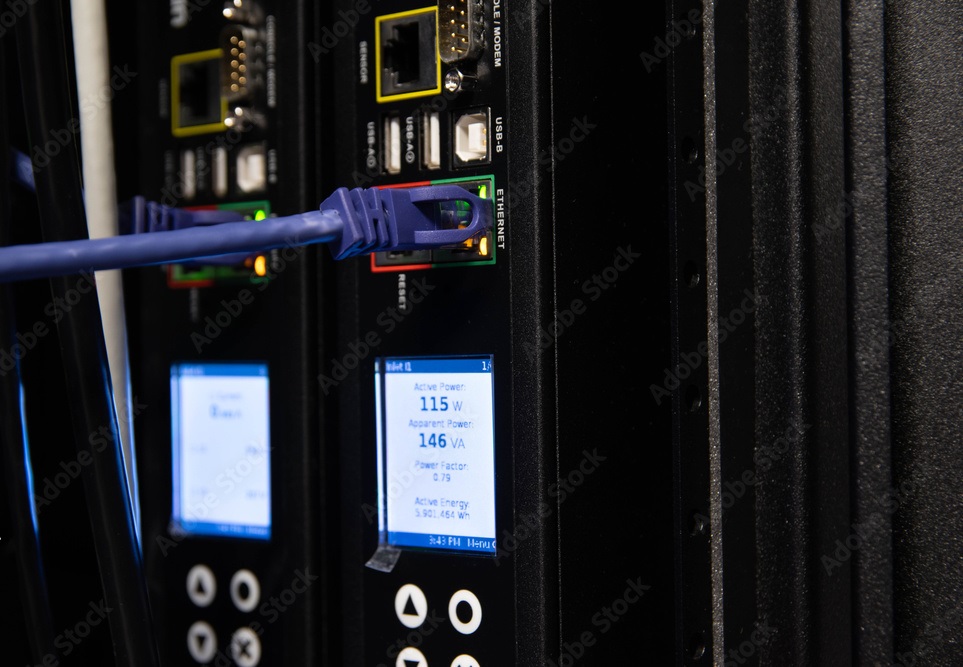Data centers are essential for modern business operations, yet their power demands are significant. Managing energy usage effectively is vital for reliability, efficiency, and cost control. This post explores the importance of planning for peak power usage, choosing efficient hardware, and implementing best practices to optimize data center energy management.
Understanding Peak Power Usage in Data Centers
Effective power management begins with understanding peak power usage. While servers may operate at varying power levels during normal operations, certain scenarios, such as a power outage followed by a UPS cutover, can result in all servers booting simultaneously. This leads to a temporary but substantial spike in power consumption.
If the combined peak power draw of servers exceeds the circuit or PDU capacity, it can trip breakers, leading to downtime. To mitigate this risk, always calculate power consumption based on the peak power draw of each server. Ensure the total power usage on a circuit does not exceed 80% of its rated capacity. This 80% rule provides a safety margin to handle transient spikes and maintain compliance with electrical standards.
The Dangers of Relying on Idle Power Consumption
Measuring energy consumption based solely on idle power usage is risky for several reasons:
- Unpredictable Server Loads: Server workloads vary depending on applications, causing sudden or sustained power spikes.
- Transient Spikes: Many PDUs measure power usage in 5-minute intervals, which may not capture short-term spikes. Multiple servers spiking simultaneously can trip the breaker even if average usage is within limits.
- System Resilience During Outages: Designing for peak power ensures the infrastructure can handle simultaneous high loads during recovery from power loss.
Efficient Hardware Choices for Reduced Power Consumption
Selecting efficient hardware components, such as low-voltage CPUs and RAM, is key to reducing energy costs and overall power draw. While these components may have a higher upfront cost, their long-term savings make them a wise investment. Consider the following examples:
| CPU Model | Cores | Base Frequency | TDP (Watts) |
| Intel Xeon Bronze 3104 | 6 | 1.7 GHz | 85W |
| Intel Xeon Bronze 3106 | 8 | 1.7 GHz | 85W |
| Intel Xeon Silver 4110 | 8 | 2.1 GHz | 85W |
| Intel Xeon Silver 4112 | 4 | 2.6 GHz | 85W |
| Intel Xeon Silver 4114 | 10 | 2.2 GHz | 85W |
| Intel Xeon Gold 5115 | 10 | 2.4 GHz | 85W |
| Intel Xeon Silver 4116 | 12 | 2.1 GHz | 85W |
| Intel Xeon Gold 5120 | 14 | 2.2 GHz | 105W |
| Intel Xeon Gold 5122 | 4 | 3.6 GHz | 105W |
| Intel Xeon Gold 5118 | 12 | 2.3 GHz | 105W |
| Intel Xeon Gold 6130 | 16 | 2.1 GHz | 125W |
| Intel Xeon Gold 6126 | 12 | 2.6 GHz | 125W |
| Intel Xeon Gold 6140 | 18 | 2.3 GHz | 140W |
| Intel Xeon Gold 6140M | 18 | 2.3 GHz | 140W |
| Intel Xeon Gold 6132 | 14 | 2.6 GHz | 140W |
| Intel Xeon Gold 6134 | 8 | 3.2 GHz | 130W |
| Intel Xeon Gold 6142 | 16 | 2.6 GHz | 150W |
| Intel Xeon Gold 6144 | 8 | 3.5 GHz | 150W |
| Intel Xeon Gold 6244 | 8 | 3.6 GHz | 150W |
| Intel Xeon Gold 6240 | 18 | 2.6 GHz | 150W |
For instance, the Intel Xeon Gold 5118 offers double the cores of the Intel Xeon Bronze 3104 with only a modest increase in power consumption, making it more efficient for multi-threaded tasks. Leveraging such hardware can reduce the number of servers required, cutting overall power usage.
Refurbished Hardware and Power Capping
Organizations can save costs by opting for refurbished hardware, which is often only 1-2 years old. The refurbished market offers smaller price differences between standard and low-voltage hardware, enabling investment in efficient systems without significant expense.
Additionally, some server manufacturers, like Dell, provide power capping features. These allow administrators to limit a server’s maximum power draw, offering control and flexibility in managing peak usage.
Best Practices for Power Planning
- Measure Peak Power for All Servers: Use peak consumption figures to design power distribution, ensuring circuits remain within safe limits.
- Adhere to the 80% Rule: Avoid exceeding 80% of a circuit’s rated capacity to accommodate transient spikes and peak loads.
- Monitor and Plan for Spikes: While tools that monitor power trends are useful, design infrastructure to handle worst-case scenarios that may not be captured by PDU reports.
- Optimize Hardware Choices: Invest in energy-efficient CPUs, RAM, and consider refurbished options to reduce costs.
- Leverage Power Capping: Use power capping to manage high-power servers effectively, balancing performance with energy constraints.
Conclusion
Power management in data centers requires careful planning and informed choices. By designing systems around peak power consumption, adhering to the 80% rule, and incorporating efficient hardware solutions, organizations can build resilient, cost-effective, and sustainable operations. Proactively managing energy usage ensures reliability and prepares your data center for the unpredictable demands of modern workloads.


